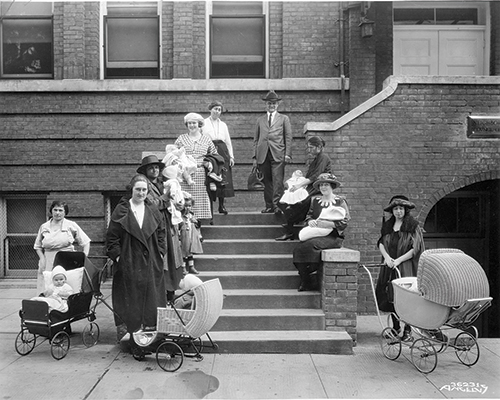Since the early ’90s, Oregon’s immigrant population has increased drastically: Today, about 28 percent of the state’s population is foreign-born. These immigrants from far-flung countries come to the Northwest to try and start new lives—to try and settle in.
This is the sound of ‘Settling’

Since the early ’90s, Oregon’s immigrant population has increased drastically: Today, about 28 percent of the state’s population is foreign-born. These immigrants from far-flung countries come to the Northwest to try and start new lives—to try and settle in.
The Oregon Jewish Museum’s new exhibit, “Settling In,” celebrates the journeys of immigrants to Oregon and will give viewers a deeper understanding of immigration concerns in the U.S.
The series opens today and runs until Sept. 29 and will feature many exhibits, including 14 immigrant women who have agreed to share their stories of struggle and survival with the public. One of several programs is the film 400 Miles to Freedom, which follows the life of former refugee Avishai Mekenon, who emigrated from Israel to the U.S. in search of a better life.
The exhibit is sponsored by Portland’s Immigrant Refugee Community Organization, a nonprofit group that provides support for families of immigrants and refugees. Since 1973, IRCO has remained a driving force in leading refugee organizations in the Pacific Northwest.
“The museum is dedicated to preserving and studying artifacts that are deeply rooted with immigration within Oregon,” said Sokhom Tauch, IRCO’s executive director. “‘Settling In’ provides an important look at the immigrant and refugee experience through two interconnected viewpoints, revealing truths about our shared experiences and intercultural understanding.”
The exhibition includes older stories of Russian and Jewish immigrants as well as those of contemporary immigrants from places like Cuba, Cambodia and Congo.
“We wanted to compare and contrast these encounters with the much more complex experience of acculturation with the current immigrant populations,” said Judith Margles, executive director of the Oregon Jewish Museum.
Settling In
Thursday, May 8, to Sunday, Sept. 29
1953 NW Kearney St.
$6 general admission, $4 students, free for members
The museum serves as a place of cultural history that has long celebrated the importance of the immigrant population.
“The exhibit focuses on extensive research we’ve conducted which trace[s] the experiences [of] cultural retention, assimilation and transmission faced by the Jewish community,” Margles said.
IRCO also remains an active participant in education and crime prevention, according to its website. The event was initially put together by professor of public administration in the Mark O. Hatfield School of Government and former President of the Oregon Jewish Museum Craig Wollner. He also served as the associate dean of the College of Urban and Public Affairs at Portland State.
Wollner died before he had the opportunity to see the exhibit come together.
“He should really be the one to thank here, because it was his idea…It’s too bad he is not here to see it,” Margles said.
Wollner was a warm-hearted man who built a reputation as one of PSU’s most beloved professors.
“This exhibit is dedicated in his memory,” Margles said.
The IRCO has additional branches in Southeast and Northeast Portland, which provide newly arrived foreigners a chance to adapt more easily into American society.
“The purpose of this exhibition is to explore immigration on a deeper level by drawing on stories of Russian Jews of more than a century ago,” Margles said.




